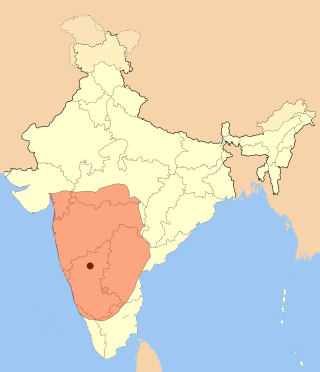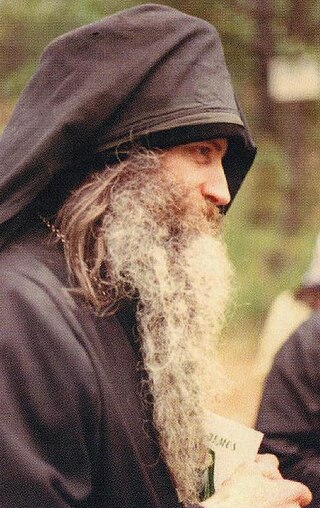Related Research Articles

Palestinian Christians are a religious community of the Palestinian people consisting of those who identify as Christians, including those who are cultural Christians in addition to those who actively adhere to Christianity. They are a religious minority within the State of Palestine and within Israel, as well as within the Palestinian diaspora. Applying the broader definition, which groups together individuals with full or partial Palestinian Christian ancestry, the term was applied to an estimated 500,000 people globally in the year 2000. As most Palestinians are Arabs, the overwhelming majority of Palestinian Christians also identify as Arab Christians.

Polycarp was a Christian bishop of Smyrna. According to the Martyrdom of Polycarp, he died a martyr, bound and burned at the stake, then stabbed when the fire failed to consume his body. Polycarp is regarded as a saint and Church Father in the Catholic Church, Eastern Orthodox Church, Oriental Orthodox Churches, Lutheranism, and Anglicanism.

Year 543 (DXLIII) was a common year starting on Thursday of the Julian calendar, the 543rd year of the Common Era (CE) and Anno Domini (AD) designations, the 543rd year of the 1st millennium, the 43rd year of the 6th century, and the 4th year of the 540s decade. As of the start of 543, the Gregorian calendar was 2 days ahead of the Julian calendar, which was the dominant calendar of the time.

Year 520 (DXX) was a leap year starting on Wednesday of the Julian calendar. In the Roman Empire, it was known as the Year of the Consulship of Rusticus and Vitalianus. The denomination 520 for this year has been used since the early medieval period, when the Anno Domini calendar era became the prevalent method in Europe for naming years.

In Christianity, an anchorite or anchoret is someone who, for religious reasons, withdraws from secular society to be able to lead an intensely prayer-orientated, ascetic, or Eucharist-focused life. Anchorites are frequently considered to be a type of hermit, but unlike hermits, they were required to take a vow of stability of place, opting for permanent enclosure in cells often attached to churches. Also unlike hermits, anchorites were subject to a religious rite of consecration that closely resembled the funeral rite, following which they would be considered dead to the world and a type of living saint. Anchorites had a certain autonomy, as they did not answer to any ecclesiastical authority apart from bishops.

Severus the Great of Antioch, also known as Severus of Gaza or the Crown of Syrians, was the Patriarch of Antioch, and head of the Syriac Orthodox Church, from 512 until his death in 538. He is venerated as a saint in the Oriental Orthodox Church, and his feast day is 8 February.
Peter the Iberian was a Georgian royal prince, theologian and philosopher who was a prominent figure in early Christianity and one of the founders of Christian Neoplatonism. Some have claimed that he is the author known conventionally as Pseudo-Dionysius the Areopagite.
Dorotheus of Gaza or Abba Dorotheus, was a Christian monk and abbot.

The Holy Lavra of Saint Sabbas, known in Arabic and Syriac as Mar Saba and historically as the Great Laura of Saint Sabas, is a Greek Orthodox monastery overlooking the Kidron Valley in the Bethlehem Governorate of Palestine, in the West Bank, at a point halfway between Bethlehem and the Dead Sea. The monks of Mar Saba and those of subsidiary houses are known as Sabaites.

Sophronius, called Sophronius the Sophist, was the Patriarch of Jerusalem from 634 until his death. He is venerated as a saint in the Eastern Orthodox and Catholic Churches. Before rising to the primacy of the see of Jerusalem, he was a monk and theologian who was the chief protagonist for orthodox teaching in the doctrinal controversy on the essential nature of Jesus and his volitional acts. He is also renowned for negotiation of surrender of Jerusalem to the Muslim caliph Umar ibn al-Khattab.

Seraphim Rose, also known as Seraphim of Platina, was an American hieromonk of the Russian Orthodox Church Outside Russia who co-founded the Saint Herman of Alaska Monastery in Platina, California. He translated Eastern Orthodox Christian texts and authored several works. His writings have been credited with helping to spread Eastern Orthodox Christianity throughout the West; his popularity equally extended to Russia itself, where his works were secretly reproduced and distributed by samizdat during the Communist era, remaining popular today.

April 21 - Eastern Orthodox liturgical calendar - April 23

The Monastery of Stoudios, more fully Monastery of Saint John the Forerunner "at Stoudios", often shortened to Stoudios, Studion or Stoudion, was a Greek Orthodox monastery in Constantinople, the capital of the Byzantine Empire. The residents of the monastery were referred to as Stoudites. Although the monastery has been derelict for half a millennium, the laws and customs of the Stoudion were taken as models by the monks of Mount Athos and of many other monasteries of the Orthodox world; even today they have influence.
Discernment of spirits is a term used in Eastern Orthodox, Roman Catholic and Charismatic Christian theology to judge the influence of various spiritual agents on a person's morality. These agents are:
- from within the human soul itself, known as concupiscence
- Divine Grace
- Angels
- Devils

Barsanuphius, also known as Barsanuphius of Palestine, Barsanuphius of Gaza or Barsanuphius the Great, was a Christian hermit and writer of the sixth century.
Isaiah the Solitary, also known as Isaiah of Gaza, Isaias the Solitary, Abba Isaiah, or possibly also Isaiah of Scetis, was a Christian ascetic and monastic writer known from the Sayings of the Desert Fathers and various Palestinian Miaphysite sources. He is canonized as a saint by the Coptic Orthodox Church, with his feast day on the 11th day of the month Abib (Epip) in the Coptic calendar.
Seridus of Gaza was a Palestinian abbot of a monastery that was later named after him. He was disciple of the hermits Barsanuphius and John the Prophet and is venerated as saint by the Eastern Orthodox Church on 13 August.
The monastery of Seridus was a monastic community that flourished during the 6th and early 7th century in Palestine. Founded by Seridus of Gaza after whom the monastery was later named, it housed in the first half of the sixth century the well-known hermits Barsanuphius and John the Prophet who attracted many visitors.
Zeno the Prophet was an Egyptian monk and a Desert Father. He was disciple of the hermit Silvanus of Gaza, became the spiritual guide of the famous Georgian Peter the Iberian and is venerated as saint by the Eastern Orthodox Church on 19 June.
The Diocese of Gaza was a bishopric in the Holy Land. Its episcopal see was the city of Gaza and it is now a vacant Latin Catholic titular see.
References
- 1 2 Barnasuphius and John Letters, translated by John Chryssavgis Catholic University of America Press (2002)
- 1 2 Torrance 2013, p. 122.
- ↑ Hevelone-Harper 2019, p. 424.
- ↑ "Elders Barsanuphius and John". Orthodox Photos. Retrieved April 9, 2011.